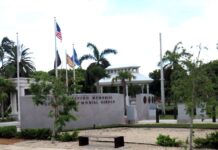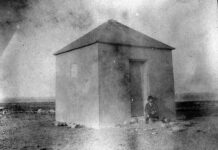Monroe County became the Florida Territory’s sixth county when it was established in 1823. The county was named after the fifth president of the United States, James Monroe. Historically, Monroe County stretched from the Dry Tortugas north to the southern shore of Lake Okeechobee and west to the Gulf of Mexico. In 1828, Key West would become the county’s first incorporated city. The second city to incorporate is not so obvious and will likely come as a surprise, but then Monroe County once represented a much greater piece of real estate. Taking that into consideration, it makes more sense that on Aug. 12, 1885 Fort Myers became Monroe County’s second incorporated city.
Because Key West had been the largest city in the vast county, it became home to the county seat. The location proved all fine and good for residents of Key West, but for those living in other parts of the county, traveling to the courthouse was inconvenient at best. It was not long before residents from communities at Key Vaca, Indian Key, and Key Biscayne began to petition the Florida Territory’s Legislative Council for the creation of a new county and a more centrally located county seat. The Legislative Council voted for the creation of a new county in January 1836 and the establishment of a new county named Dade was approved on Feb. 4, 1836. The county was named in honor of Major Francis L. Dade, who had been killed the year before in an attack during the second escalation of the Seminole War.
Monroe County’s new boundary ended at Bahia Honda, with the Middle and Upper Keys becoming part of Dade County. The county seat was established at Indian Key, though court proceedings would not be limited to the Indian Key location. At least once a year the county court convened on Key Biscayne. Three justices of the peace were appointed and included William Cooley, Lemuel Otis, and the former mayor of Key West, William Whitehead, who had since moved to Key Vaca. According to the records of the Monroe County Sheriff’s Office, Lemuel Otis was recognized as the first county sheriff in 1829. The county seat would move to the mainland and the burgeoning community of Miami in 1844. In 1866, the county lines were again redrawn and the Middle and Upper Keys between Key Largo and Bahia Honda returned to Monroe County.
Brad Bertelli is curator of the Keys History & Discovery Center.


























